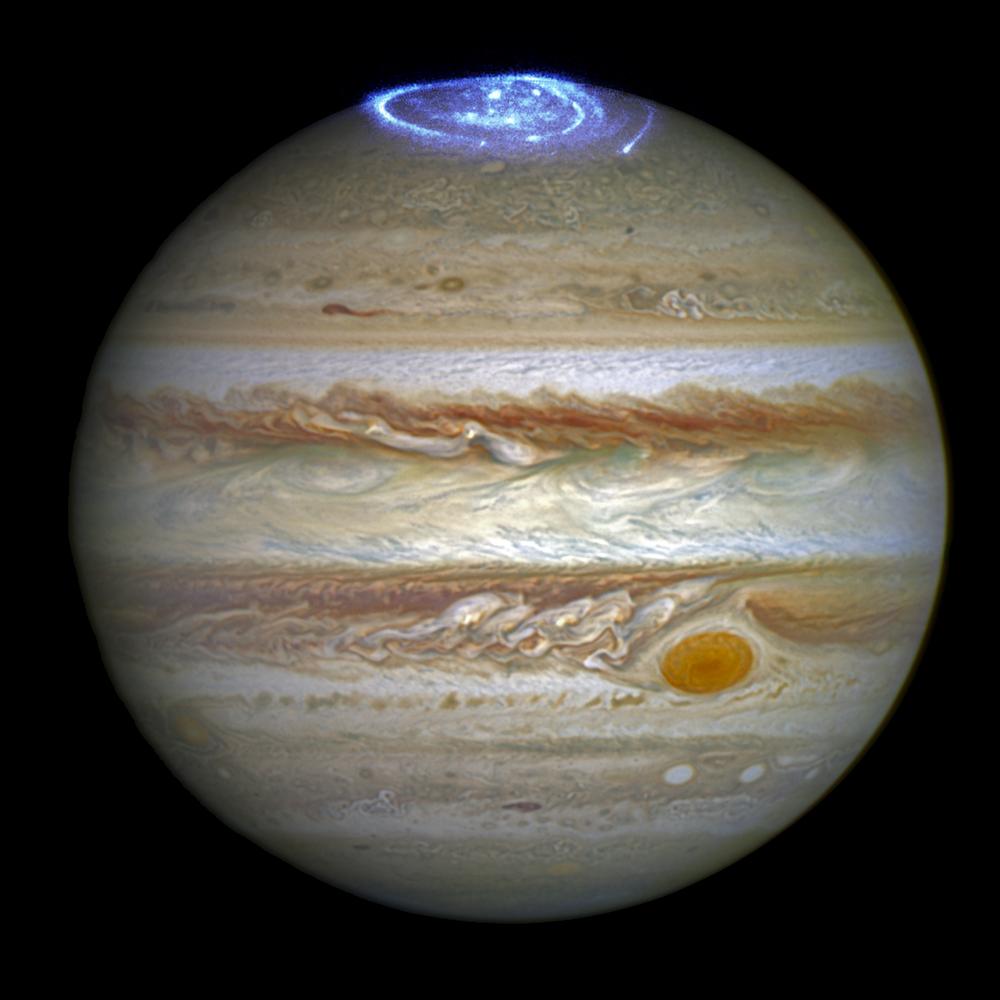
Jupiter’s Aurora
Astronomers are using the Hubble Space Telescope to study auroras — stunning light shows in a planet's atmosphere — on the poles of the largest planet in the solar system, Jupiter. The auroras were photographed during a series of Hubble Space Telescope far-ultraviolet-light observations taking place as NASA's Juno spacecraft approached and entered into orbit around Jupiter in 2016. The aim of the program was to determine how Jupiter's auroras respond to changing conditions in the solar wind, a stream of charged particles emitted from the Sun. Auroras form when charged particles in the space surrounding the planet are accelerated to high energies along the planet's magnetic field. When the particles hit the atmosphere near the magnetic poles, they cause it to glow like gases in a fluorescent light fixture. For more information, visit: hubblesite.org/news_release/news/2016-24
- X























